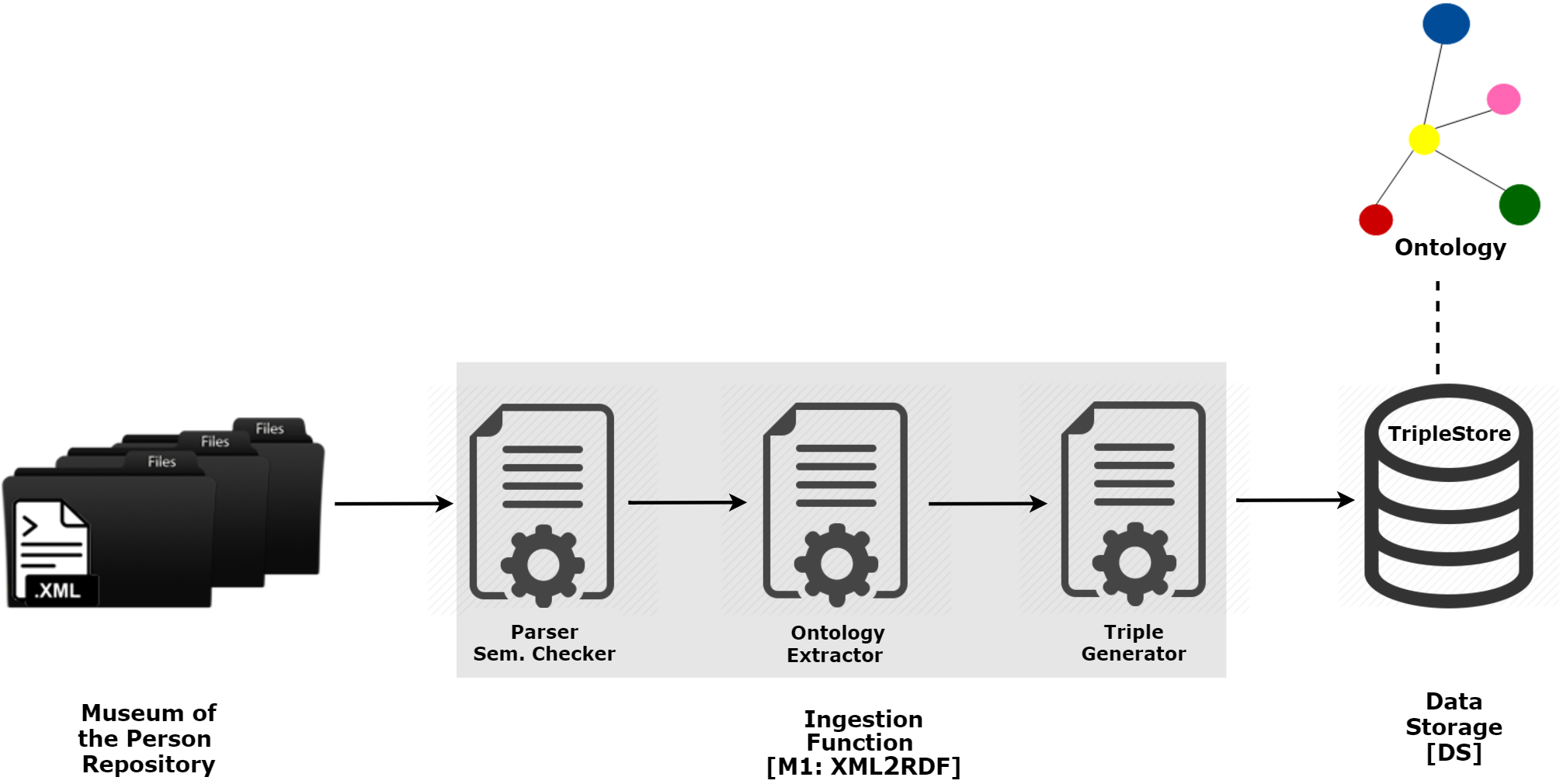Núcleo Português do
Museu da Pessoa
Approach 1 - TripleStore
According to this decision, Ingestion Module and the Generator Module must be adapted; the first will transform the input XML (eXtensible Markup Language) documents into RDF (Resource Description Framework) triples, and the second will retrieve information from the RDF triples to create the museum web pages. Figure 1 details the first module that is composed of three blocks:
- Parser and Semantic Checker that reads the repository documents and extracts the relevant data (annotated in XML), checking their semantic consistency;
- Ontology Extractor that identifies in the extracted data the concepts and relations that belong to the ontology creating in this way an instance of the abstract ontology (in another words, this component populates the ontology);
- Triple Generator that converts automatically the ontology triples (created in the preceding block) into triples in RDF notation appropriated to be stored in the [DS] chosen.

The mapping between the domain ontology (previously defined) and the data extracted from the repository is automatically built by construction in the second block, above. This is, in this approach there is no need to create explicitly this mapping. It means that the Generator [M2] can access directly the storage to obtain the conceptual information necessary to create the exhibition rooms.
To display in the Virtual Learning Spaces [VLS] the information stored in [DS]–TripleStore, the [VLS] Generator needs to send queries and process the returned data. Figure 2 shows the second module [M2] (the Generator) that is composed of two blocks:
- SPARQL Endpoint that receives and interprets the SPARQL queries, accesses the TripleStore and returns the answers;
- Query Processor generates the SPARQL queries according to the exhibition room requirements, sends them to the SPARQL Endpoint and after receiving the answer, combines the returned data to set up the Virtual Learning Spaces [VLS].

In this approach, each Virtual Learning Space (a museum’s exhibition room) is built fulfilling a web page template with the concrete data retrieved from the data store.